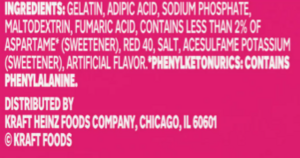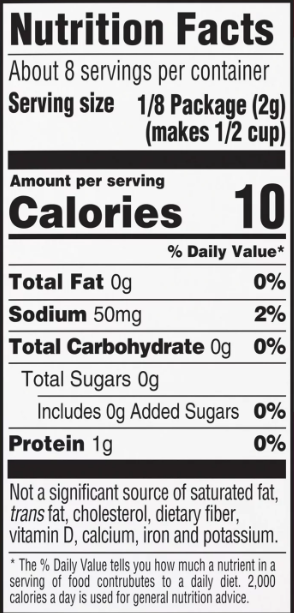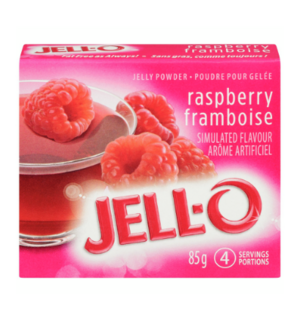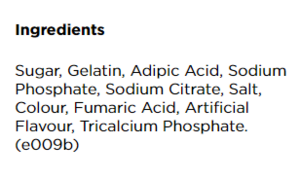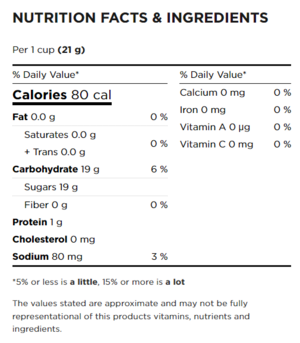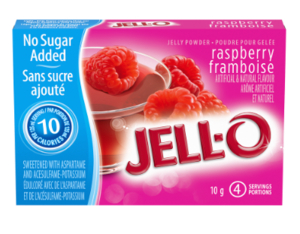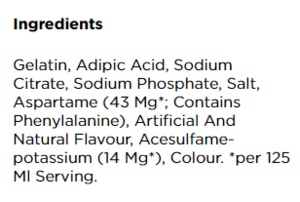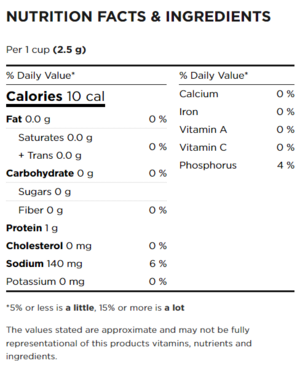Course:NH200/Assignments/2023/KraftHeinz Jell-O in the USA vs. in Canada
Jell-O
A registered trademark of Kraft Heinz, Jell-O is an American brand that offers a variety of fruit-flavoured gelatin based desserts, pudding, and no-bake pie mixes that comes in many Ready-to-make, premade, and prepackaged forms[1].
First introduced in 1897, Jell-O is the original gelatin desert that was first offered in strawberry, raspberry, orange, and lemon flavours[1]. Popularized by it's ease in home preparation (by just adding water to the mixture and allowing to sit in the fridge for a few hours to make the perfect dessert every time) and low cost to purchase, Jell-O has become a staple to American diets and is now a worldwide dessert that is readily consumed[1].
Description
Raspberry Jell-O (classic and it's sugar free alternative) is in a powdered form that contains gelatin, flavouring, and includes either sugar or artificial sweeteners[1]. To prepare it, the powder is dissolved in hot water, chilled and allowed to set before consumption. Many families enjoy adding fruits, vegetables, and whipped cream to make the snack more elaborate and enjoy putting the dessert into molds for party settings[1]. This product can be found in both the USA and Canada.
Pictures
| Jell-O Flavour and Style | Product Front | Ingredients | Nutrition Facts |
|---|---|---|---|
| Raspberry, Classic | |||
| Raspberry, Sugar Free |
| Jell-O Flavour and Style | Product Front | Ingredients | Nutrition Facts |
|---|---|---|---|
| Raspberry, Classic | |||
| Raspberry, Sugar Free |
Ingredients
Classic Jell-O
- In USA: Sugar, Gelatin, Adipic Acid, Artificial Flavor (Less than 2%), Disodium Phosphate, Sodium Citrate, Red 40, Fumaric Acid, Natural Flavor.
- In Canada: Sugar, Gelatin, Adipic Acid, Sodium Phosphate, Sodium Citrate, Salt, Colour, Fumaric Acid, Artificial Flavour, Tricalcium Phosphate.
- The main ingredients in Jell-O are sugar, gelatin, and adipic acid. American Jell-O contains both natural and artificial flavourings while Canadian Jell-O is made of only aritifical flavourings. Canadian Jell-O also has one extra additive which is Tricalcium Phosphate.
Sugar Free Jell-O
- In USA: Gelatin, Adipic Acid, Sodium Phosphate, Maltodextrin, Fumaric Acid, Aspartame (Less than 2%), Red 40, Salt, Acesulfame Potassium, Artificial Flavor, Phenylketonurics: Contains Phenylalanine.
- In Canada: Gelatin, Adipic Acid, Sodium Citrate, Sodium Phosphate, Salt, Aspartame (Contains Phenylalanine), Artificial And Natural Flavour, Acesulfame-potassium, Colour.
- The main ingredients in sugar free Jell-O are gelatin and adipic acid. Both American and Canadian Jell-O use aspartame and acesulfame potassium as sugar substitution.
Production
Classic Jell-O
The production of Jell-O is similar in both the United States and Canada, with some variations. In general the process is as follows:
- Dry ingredients such as Gelatin, sugar, adipic acid, artificial flavor, disodium phosphate, sodium citrate, and fumaric acid are measured and mixed together.
- Artificial flavour compounds and colours are mixed in.
- The blended mixture undergoes processing such as agglomeration to form granules to improve dissolution of the Jell-O powder.
- The mixture is packaged up and sent to quality control before it's sent off for distribution.
In the USA
- In the United States they use Red 40 to give Jell-O it's signature colour.
- Disodium Phosphate is a specific sodium phosphate compound generally used as an acidity regulator and as an emulsifier.
In Canada
- There is no direct specification on what colouring product is used in Canada, however because Red 40 is a widely used food colouring product we can assume it's likely the same one used here.
- Sodium phosphate is a broader term encompassing various compounds that contain both sodium and phosphate ions. Disodium phospate as listed in the USA ingredients falls under the Sodium phosphate group.
- There is no information on why the Canadian variation has tricalcium phosphate, but there are a few things we can infer. Tricalcium phosphate is a good source of calcium and it's possible that it's added as a method of calcium fortification. Another use case of Tricalcium phosphate is that it prevents caking and clumping and could be used to prolong shelf life of the product.
Sugar Free Jell-O
The production of sugar free Jell-O is the same as the production of classic Jell-O with the exception of substituting regular sugar with aspartame and acesulfame potassium.
In the USA
- Phenylketonurics is listed because it's required by the FDA to alert people who may have phenylketonuria. This isn't required in Canada.
- Maltodextrin is a flavouring agent and this could be used instead of sodium citrate which is used in Canada for flavouring.
In Canada
- Sodium Citrate is a flavouring agent and could possibly be a replacement for maltodextrin. There is no definitive reason why this is used instead.
Regulation
In the USA
In Canada
- 1
- 2
- 3
Storage and Packaging
Storage and packaging of Jelly Powder in the US and Canada are the same.
It's important to keep the powder dry and protected from moisture to prevent clumping. Jelly Powder, because of it's low water activity, is hygroscopic which means that it readily picks up moisture. This is why the main requirement for packaging would be that there must be no transmission of water vapour from the surrounding environment into the food. Packaging should also protect against oxygen and light. In Jell-O's case there is use of Tetra Pak to contain the powder, made from laminated plastic, aluminum and paper.
Jell-O also has Physical protection to prevent the powder from becoming crushed during distribution and handling. This physical protection is through a small cardboard box that holds the tetra pack with the powder inside. The paper box provides protection from outside particles as well as provides consumers with a place to store leftover Jello-O powder and prevent it from getting wet.



